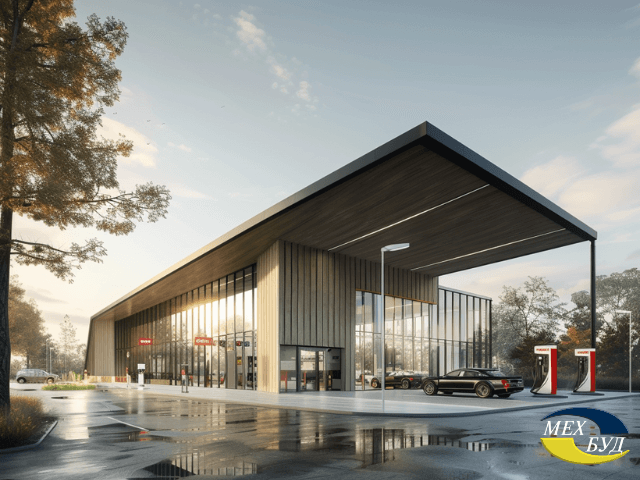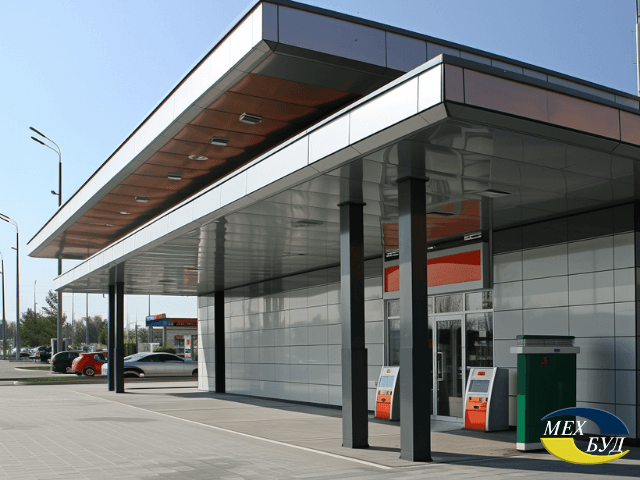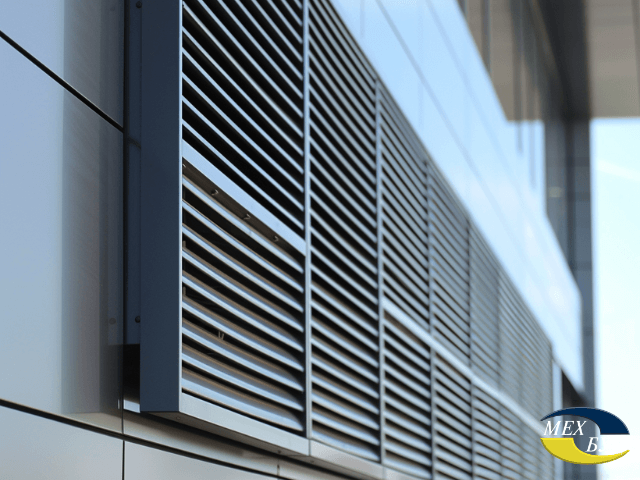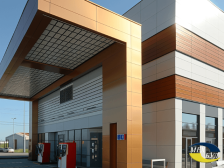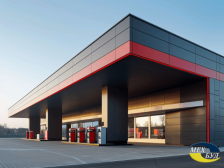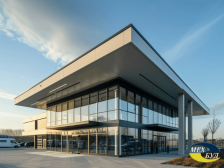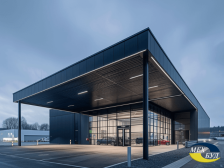Difference between facade and interior cladding systems
The difference between facade and interior cladding systems lies in the significantly greater projection of panels from the wall on the facade (140-200 mm), to accommodate insulation and create a ventilated space (40-70 mm) for moisture and warm air removal.
Lattice panels or cassettes for the facade are selected from thicker metal (1-1.5 mm) and have a strong lock for joining the panels. Facade cladding must withstand wind loads, both for compression and tearing (hurricane winds create pressure of 80 kg/m2 at heights up to 20 m). In the interior, preference is given to siding, with thinner metal (0.45-0.7 mm) and a simpler mounting system.
In both cases, a protective polymer coating is applied to the metal, the thickness of which is regulated by the current standard, regardless of the area of use. The color of the coating, according to the RAL palette, is provided with sufficient accuracy. So the designer can create a photorealistic visualization, the colors of which will be very close to the future architectural structure.

